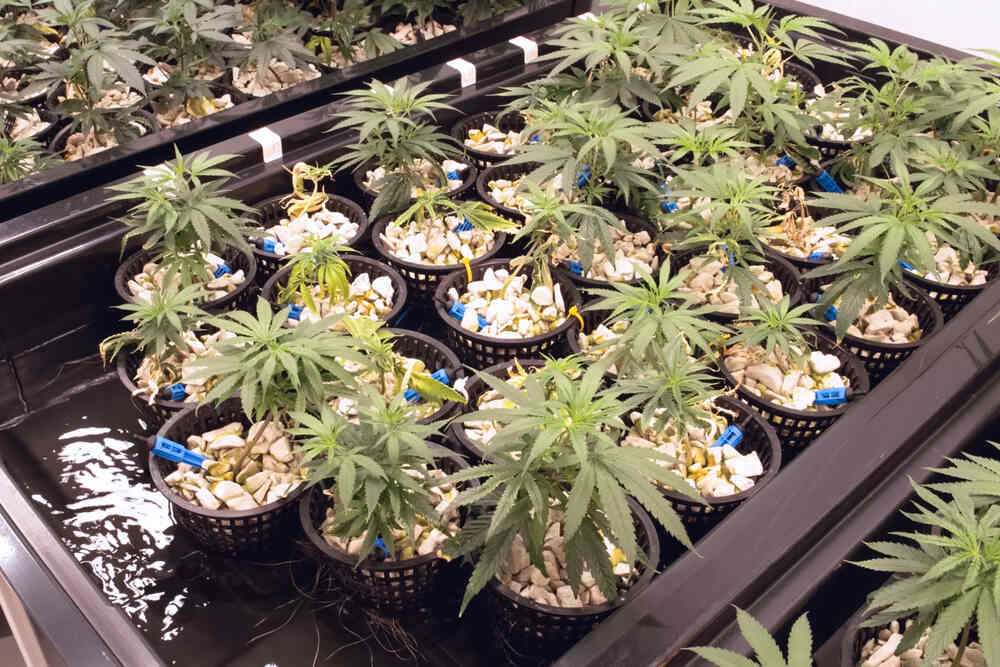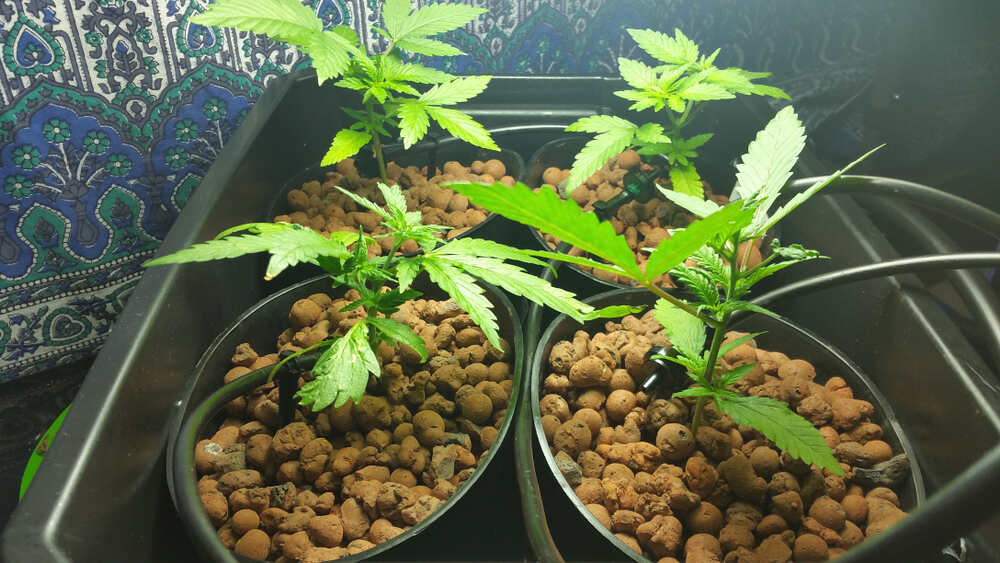The Best Fluffy Pancakes recipe you will fall in love with. Full of tips and tricks to help you make the best pancakes.

How to Grow Cannabis Using Hydroponics
Growing cannabis hydroponically can seem like a complicated process, but trust me, it’s actually easier than it sounds. When you get it right, it’s one of the most efficient and rewarding ways to grow cannabis, especially for beginners. With no soil in the way, your plants get direct access to everything they need to thrive. Plus, who doesn’t like the idea of bigger, faster-growing buds? Let’s get into it, and I’ll guide you through how to grow cannabis using hydroponics.
What is Hydroponics and Why Use it for Cannabis?
Hydroponics is a method of growing plants without soil, instead using a water-based solution full of nutrients. Think of it as giving your cannabis direct access to the good stuff—nutrients, water, and oxygen—without them having to search through soil to get it.
Definition of hydroponics and its benefits over soil
In hydroponics, your plants grow in a controlled environment, which means you can fine-tune their nutrients, water levels, and even light exposure. This is great because it leads to faster growth and healthier plants. Unlike soil, hydroponics gives your plants a perfectly balanced diet right to the roots.
Faster growth rates and higher yields in hydroponics
When you grow in soil, plants have to work harder to find nutrients, which slows them down. In hydroponics, you’ve cut out that middleman. This method allows your cannabis to grow up to 30-50% faster compared to soil, giving you quicker harvests and higher yields per plant. That’s a win-win!
Water and nutrient efficiency in hydroponic systems
One of the cool things about hydroponics is that it’s super efficient with water and nutrients. You use less water compared to soil grows, and since you’re directly controlling the nutrient intake, nothing gets wasted. That’s great for the environment and your wallet.
Essential Equipment for Hydroponic Cannabis Growth

Before you start growing hydroponically, you’ll need to gather some key pieces of equipment. Trust me, having the right tools makes all the difference.
Hydroponic systems: Deep Water Culture (DWC), Ebb and Flow, and Drip Systems
There are different types of hydroponic systems to choose from, each with its own setup. Deep Water Culture (DWC) is one of the easiest for beginners. Ebb and Flow systems are also popular because they’re simple to manage, while drip systems give precise control over feeding.
Necessary tools: pH meters, PPM meters, and water pumps
You’ll need a few instruments to keep everything running smoothly. A pH meter helps you check the acidity of your water, which is key for nutrient absorption. A PPM (Parts Per Million) meter checks the nutrient concentration, and a water pump keeps everything circulating.
Growing mediums: Rockwool, clay pebbles, and coco coir
In hydroponics, you’ll use a growing medium to support your plants’ roots. Rockwool is a great option because it holds water and air well. Clay pebbles and coco coir are also popular, helping anchor the plants without the need for soil.

Lighting and ventilation for hydroponic setups
Lighting is a big deal for cannabis. You’ll want to invest in good-quality grow lights, like LED or HPS lights, to mimic the sun. Don’t forget ventilation—fans help move air around, which keeps the plants happy and reduces the risk of mold or mildew.
Step-by-Step Guide to Setting Up Your Hydroponic System
Now that you’ve got your gear, let’s dive into how to set everything up.
Selecting and preparing your growing space
Find a space that’s clean and has access to electricity for your lights and water pump. You’ll also need good airflow and enough room for your plants to grow without overcrowding.
Assembling the hydroponic system: Reservoirs, pumps, and timers
Start by setting up your reservoir, which will hold the water and nutrient solution. Connect your water pump to circulate the solution, and use a timer to automate watering cycles. This will keep your plants fed consistently without you having to worry.
Preparing and balancing nutrient solutions
Fill your reservoir with clean water and mix in your nutrient solution according to the manufacturer’s instructions. Make sure the pH stays between 5.5 and 6.5 for optimal nutrient uptake. A pH too far out of range can lock out nutrients and slow down growth.
Planting seeds or clones in hydroponic systems
You can start with either seeds or clones (cuttings from another plant). Once your seedlings or clones are ready, gently place them into the growing medium, making sure their roots can access the nutrient-rich water below.
Managing Cannabis Growth in Hydroponics
After setup, your job is to keep the system running smoothly and help your plants thrive.
Monitoring and adjusting pH and nutrient levels
Check your pH and nutrient levels daily, especially in the beginning. Nutrients should be adjusted depending on the growth phase, with seedlings needing less than plants in full bloom. Keeping everything balanced helps prevent nutrient burn or deficiencies.
Watering schedules and root health in hydroponic systems
Hydroponics is all about water, so keep an eye on your reservoir. Top off water levels when needed, and make sure the roots are staying healthy—white, strong roots mean happy plants. Brown or mushy roots might mean trouble, like root rot, which can kill your crop.
Troubleshooting common hydroponic issues: Root rot, nutrient deficiencies, and pests
Root rot happens when roots sit in stagnant water for too long. Keep that water circulating! Nutrient deficiencies show up in yellowing or burnt leaves, and pests like fungus gnats can pop up even in hydro setups. A little proactive care goes a long way to avoiding these problems.
Stages of Cannabis Growth in Hydroponics
Cannabis grows in distinct stages, and each one needs different care.
Seedling stage: Setting up the reservoir and introducing seedlings
In this stage, seedlings need lower light and nutrients. Keep the environment warm and humid to help them grow strong roots. Your reservoir should be filled with a diluted nutrient mix.
Vegetative stage: Light schedules and nutrient adjustments
Once the plants hit the vegetative stage, they need more light—typically 18 hours on and 6 hours off each day. Boost nutrient levels to support faster growth, and don’t be shy about training the plants to grow wide and bushy.
Flowering stage: Switching to 12/12 light cycle and nutrient needs
When you’re ready to flower, switch your light schedule to 12 hours on, 12 hours off. Reduce nitrogen in the nutrients and focus more on phosphorus and potassium to promote big, sticky buds.
Harvesting and Curing Hydroponically Grown Cannabis
The final step in your journey is harvesting and curing your buds.
Signs that cannabis is ready to harvest
You’ll know your plants are ready when the trichomes (tiny crystals on the buds) turn milky white, and the pistils (hairs) are mostly brown. Timing the harvest right is key to getting the best potency and flavor.
Proper techniques for harvesting hydroponic cannabis
Use clean, sharp scissors to cut the buds from the plant. Hang them upside down in a cool, dark place with good airflow to start the drying process.
Curing cannabis for better flavor and potency
Once dried, place your buds in airtight jars and “burp” them daily by opening the jar for a few minutes. This process, known as curing, can take a few weeks but really brings out the flavor and strength of your cannabis.
FAQ:
What are the best hydroponic systems for growing cannabis at home?
Deep Water Culture (DWC) and Ebb and Flow are the easiest systems for beginners, providing excellent control over nutrient and water delivery.
How often should I check pH levels in a hydroponic setup?
Check pH daily to ensure it stays between 5.5 and 6.5. This prevents nutrient lockout, helping your plants absorb what they need.
Can I grow cannabis hydroponically outdoors?
Yes, but you’ll need to control temperature and pests more carefully. Indoor growing is easier for maintaining consistent conditions.
What type of nutrients should I use for hydroponic cannabis?
Use nutrient solutions specifically designed for hydroponics. These typically include nitrogen, phosphorus, potassium, and micronutrients.
How long does it take to grow cannabis using hydroponics?
From seed to harvest, it takes about 3-4 months, depending on the strain and conditions, with faster growth compared to soil-based methods.
Growing cannabis hydroponically isn’t just efficient—it’s fun, rewarding, and produces bigger, faster-growing plants. With a little attention to detail and the right equipment, you’ll be harvesting your own stash of quality cannabis in no time. Just remember to keep your system clean, check on your plants regularly, and enjoy the process!
